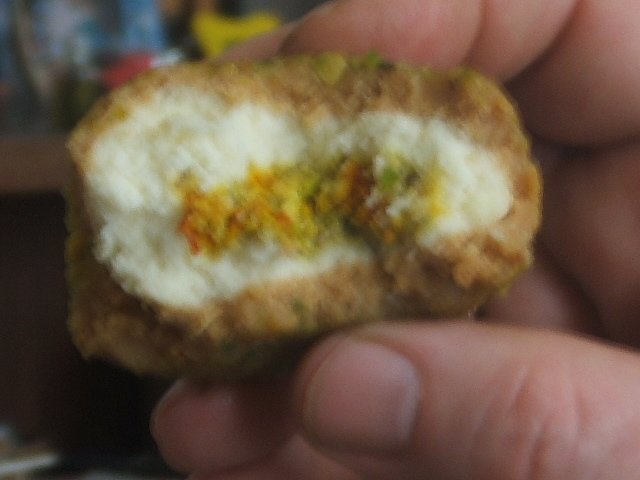so we start off with fresh cows milk, boil to to turn some to curd, and add some butter and sugar and cook it down to make koya and barfi
curd for curd steakes and or curd sabji up the top, and milk ready to be boiled down the bottom
thick fresh cow's milk just been boiled three times
cooking down koya in the left pot to make barfi, and in the right pot koya for rabbari and rasa-malai
cooking it down for about four hours
almost there
when we run the spatula across the bottom of the pot the barfi separates
and one can clearly see the clean bottom of the pot,
it is still runny and closes the gap again too quick to catch on camera,
at least for me, stiring with one hand and clicking with the other
rubbing curds on the work bench to kneed it into sweet curd. No sugar is added, but with the needing it changes to a sweet fragrance when its ready
rolled into balls when ready, some will be used for Rasagula, some for Rasa-kadam, and some for Rasa-malai
pistachio, almond and saffrom strands mixed together as a paste to go in the centre of the Rasa-kadams
Rasa-malai left, ready for steaming, Rasa-gulas ready for steaming in the centre, and the barfi outer covering and pista-badam-keshar centre for Rasa-kadams
Rasa-malai ready for steaming
huge Rasa-kadams just come out from steaming, now cooling ready to be covered in barfi and rolled in ground pistachio nuts
steaming Rasa-malai
JTCd rolling the finished Rasa-kadams in ground pistachio nuts
Finished Rasa-kadams in the plastic container

pista-badam-keshar (pistachio, almond, and saffron strands) paste in the centre, the white is spongy Rasa-gula, that squeeks on yer teeth, the outside is Barfi covering and that is rolled into ground pistachio nuts. This is to me a compact package of Vedik culture; quality produce, made with care, offered with love, and relishable to the partaker............yummy.

Maha-prasadam ki jaya
This batch was sponsored by mother Kailash dd - Thank you


